Unleashing Potential: The Transformative Power of Mentoring in the Workplace
Discover how mentoring can significantly elevate your career and organisational culture, plus get insights on the innovative reverse mentoring trend!
The Hidden Benefits of Mentoring Programs
Mentoring is the silent catalyst in professional development, often overlooked yet very impactful. It’s not just about guiding; it’s about opening doors to opportunities including:
- Improving career:
greater pay and more promotions for mentors and mentees - Breaking down barriers:
increased collaboration across silos - Alignment to thrive:
faster onboarding and alignment for mentees with the organisation’s culture, vision, and goals - Enrichment:
Higher organisational commitment and job satisfaction in mentors - Leadership edge:
Increased team leadership performance in mentors - Encourage staying:
Reduce turnover
Want to stay ahead? Mentoring might be your best-kept unexplored secret!
Embrace mentoring challenges, reap the rewards!
While mentoring can present with challenges. It’s not just about knowledge transfer; it’s about connection.
The risk?
Assigning mentor roles to technical or subject matter experts who might lack the skills needed for impactful mentoring.
The solution?
Strategic planning and skill development.
The goal is clear:
to turn these potential hurdles into stepping stones for developing a robust mentoring program that drives success by….

Reverse Mentoring: A New Approach to Learning
Reverse mentoring changes the traditional roles, pairing enthusiastic mentees with experienced mentors. It’s a collaboration where those with contemporary skills can mentor others, sharing their expertise, contemporary approach and new perspectives. This method not only connects people of different backgrounds but also reverse mentoring promotes diversity and inclusion, creating an environment where everyone, regardless of their background and tenure, can both teach and learn.
The Lifelong Impact of Mentoring
Mentoring isn’t just a passing phase; it’s a lifelong journey of growth.
From acclimating to a new organisational culture to developing leadership skills, mentoring offers a variety of benefits that resonate throughout one’s career. With the inclusion of reverse mentoring, the potential is limitless, empowering every individual in the organisation to contribute, learn, and grow.
Key Takeaways
Whether you’re looking to enhance your career or you’re an organisation aiming to strengthen your team, mentoring is a strategy that delivers profound and lasting benefits. It’s an investment in people that pays dividends in knowledge, skills, and satisfaction.
Lead, learn, and thrive – get involved in mentorship!

Connect with us
Ready to tap into the power of mentoring? Contact us to learn how we can help you build a successful mentoring program tailored to your needs.
In the evolving landscape of workplace health and safety, the introduction of Queensland’s codes of practice for managing psychosocial risks, effective from April 2023, presents a pivotal opportunity for organisations.
The Code has clarified the legal responsibilities of employers to safeguard employees from the harmful impacts of stress that can arise from psychosocial hazards such as:
- Job demand
- Low role clarity
- Poor change management
- Low reward / recognition
- Remote or isolated work
- Poor environmental conditions
- Traumatic events
- Violence, aggression, bullying, and harassment.
While the thought of navigating these guidelines – and the hefty fines for non-compliance that could reach up to $10 million – might appear overwhelming, reframing this challenge is essential.
This is not merely about avoiding penalties; it’s about seizing an opportunity to foster a healthier, more productive workplace environment.
A prudent first step is assessing your organisation’s current practices against the Code’s standards. Asking the critical question, “Are there accurate and reliable processes in place that enable the documentation of effective psychosocial risk management in consultation with your people?”
For employers who find gaps, the next most important question is, “will addressing these issues be a burden or an investment for my organisation?”.

Changes as a burden
Viewing these changes as a burden may lead to a minimalist approach – doing just enough to scrape by legally. This defensive stance limits the organisation’s growth and can be more costly in the long run, as it fails to address the underlying issues that affect employee well-being and, consequently, productivity.
Change as an investment
On the flip side, perceiving these changes as an investment shifts the focus.
It’s about recognising the profound advantages of cultivating a mentally healthy workplace – not just for avoiding fines but for the inherent value it brings. By prioritising the psychological well-being of the workforce, organisations can enhance overall function, drive continuous improvement, and significantly reduce workplace stress.
The benefits of adopting an investment mindset towards psychosocial risk management are multifold – yielding improved mental health, desirable reputation impact, and improved productivity. Aligning with the Code then becomes more than a compliance checkbox; it becomes a benchmark for organisational excellence.

For leaders ready to take a strategic step forward, Mapien’s Psychological Health & Safety Maturity assessment is your starting point. And for a deeper understanding, our Myth Busting Psychosocial Hazard Management paper can serve as a valuable resource to dismantle common misconceptions and guide you towards alignment with the Code.
Connect with us
Transforming your workplace into a beacon of psychological health and safety is not just a legal imperative but a strategic differentiator. For a guided approach to transforming your workplace, please reach out to our expert team hello@mapien.com.au.
If you would like to learn more about our Myth Busting Psychosocial Hazard management paper, please let us know here!
This is blog #3 in our series on coaching models. Sign up to our mailing list to make sure you don’t miss out on our future content.
Got a challenge you need to work through or set a big goal you haven’t achieved yet? Wondering how you can get from where you are now to where you need to be — while confidently leading your team to the other side?
Perhaps you’re dealing with major industry or technology changes (most CEOs would agree that AI is a big one right now). You might need to lead your team through a restructure, relocation, acquisition, or merger. You may even find yourself experiencing unexpected challenges like natural disasters, supply chain issues, or global events.
Whether you’re currently facing a challenge or simply want to be better prepared for the future, the GROW Coaching Model is a great addition to your toolkit. In this blog, you’ll learn how you can apply this framework to your own situation – and how you might use it to support others.
Introducing the GROW Model
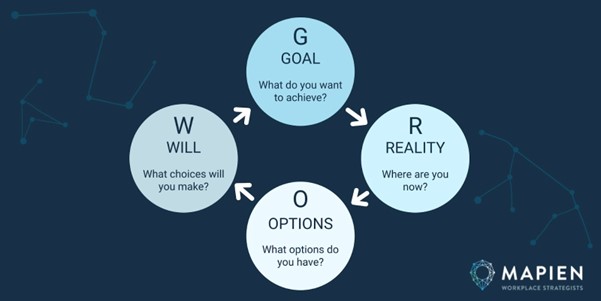
The GROW Coaching Model is a framework with four distinct steps that form the acronym: Goals, Reality, Options, and Will.
This simple-but-effective model can be used to encourage healthy conversations that are focused on solutions. You can apply the framework in team meetings, project planning, coaching sessions, leadership development, and more. It can help you build confidence, overcome difficulties, navigate change, and work towards goals.
So, let’s break each step down a little further…
1. Goal: What Do You Want to Achieve?
The first part of the framework involves identifying your aspirational goals and desired outcomes. Starting here will help you shift the focus of the conversation from problems to solutions.
Useful prompts for identifying goals include:
- What are you trying to achieve?
- What does success look or feel like?
- What would you like to happen that is not happening now?
- What is important about this?
- How will you know when you have achieved your goal?
If you’re not sure what challenges or goals to focus on (and you’re feeling stressed or under pressure), you might like to check out our previous blog on How Leaders Can Apply the Circles of Control, Influence & Concern. This coaching model can be useful for figuring out which challenges you should tackle first.
2. Reality: Where Are You Now?
Once you’ve established some meaningful goals, it’s time for a reality check. You need to consider your current situation, any obstacles that might come up, and what resources you have available to help you achieve your goals.
Prompts that will help you identify your reality include:
- What is happening at the moment?
- When and how often does this happen?
- What impact does this have on you?
- What progress have you made so far?
- What is working well right now?
By the way, if it feels like you’re facing a lot of obstacles right now, it’s not just you. A recent survey of CEOs revealed mixed feelings about performance over the coming 12 months compared to the start of 2023, thanks to obstacles like the increasing cost of doing business, rising capital costs, and geopolitical tensions.
3. Options: What Options Do You Have?
Next, it’s time to consider all the options and opportunities that may help you get closer to your goal. At this stage, don’t worry about getting it perfect. Take a ‘quantity over quality’ mindset to help broaden your thinking, encourage creativity, and generate a variety of ideas. There are many possible pathways to success — challenge yourself to identify as many as you can!
Some questions that can help you explore your options include:
- What are your options?
- What approaches or actions have been used under similar circumstances?
- What has worked in the past?
- What could you do differently?
- What are the benefits and pitfalls of these options?
If you or your team feel tired, stuck, or negative after brainstorming some options, it might be a good idea to pause and take a break. Research shows that broad thinking and creative problem solving works best when people are in a positive mindset. So, it’s okay to take a coffee break or (if time allows) come back and finish step four the following day.
4. Will: What Choices Will You Make?
The final part of the GROW Coaching Model involves deciding which specific, short-term actions will be beneficial to help you move forward. You don’t have to plan out all your steps. Instead, focus on what you can do now to clear some blocks, boost your motivation, and build momentum towards your goal.
These prompts will help you determine what to do next:
- What do you want to do?
- What one small step are you going to take now?
- When will you do that?
- What might get in the way?
- How will you know you have been successful?
Studies show that the level of accountability in organisations positively and significantly impacts performance. Meanwhile, individual accountability predicts higher levels of task and challenge performance. So, in addition to defining your next steps, we also recommend scheduling timeframes, setting accountability measures, and organising check-ins to encourage ownership.
If you’re not sure where to start with your to-do list, check out our previous blog: Get Priorities Straight With Covey’s Time Management Matrix.
Tips for Applying the GROW Model
These extra tips will help you get the most out of this coaching model.
Write Down Your Goals
When writing out your goals, it’s a good idea to note your answers down on paper. Written goals reduce the risk of ‘shifting goalposts’ – and ensures you have something specific you’re working towards, even as you go through periods of intense change. And when you do achieve your written goal, you’ll get the feelings of pride and fulfilment that come with completing a task – which can help build momentum and motivation for your next big goal.
Be the Facilitator
If you’re using the GROW Model to coach others or lead a team, you should assume the role of a facilitator. This means you’ll need to focus on active listening instead of offering direct advice. Ask questions that will help participant(s) identify information and ideas within each part of the framework. Then guide them through the process to select and implement the options they believe to be best.
Go Back If You Need To
Finally, what many people don’t realise is that the GROW Coaching Framework doesn’t have to be linear. You can go back to earlier steps in the sequence and even repeat the process in order to deepen your understanding. This might involve refining your goals, adding more insights about your current situation, or exploring more options in order to move forward more easily.
Examples of the GROW Coaching Model
Not sure how you might apply the GROW Coaching Model? We’ve put together a few examples that show how you could use this framework to explore a specific goal and confidently move forward. Like the below examples, you might write down notes as you work through the four steps, or you might use the framework to guide your team’s conversations towards a solution.
Example 1: A Business That Needs to Expand

Goal:
We want to expand the business into a new market and location. This will drive revenue growth and help us work towards our bigger mission of reaching people all over Australia.
Reality:
Right now, we’re only operating one storefront in our local market. This limits our growth. We’ve started to conduct market research to determine where we should go next. We don’t have a lot of capital, so we need to make sure that anything we invest in will pay for itself quickly.
Options:
- We could open a new store in another state or major city.
- We could offer to buy a competitor business in an area we want to target.
- We could look into expanding our products/services at our existing location to grow the business without opening a new location.
- We could partner with other businesses to offer our products/services in different markets without having to open our own premises.
- We could promote our online options heavily in potential new markets to test the waters first.
Will:
The first step is to research each option further. We’ll do some rough projections, costs, and timelines. Then we’ll consult with various business advisors to develop the pros and cons, with the view of making a decision by the end of the year.
Example 2: A Business That Needs to Improve Sustainability

Goal:
We want to improve environmental sustainability in the business. We know that sustainability is an important responsible business practice — and matters to both staff and customers.
Reality:
While we’ve already implemented some initiatives, we could do a lot better. We’ve gone totally paperless by embracing digital recordkeeping and our energy supplier is carbon neutral. But most of our staff members drive cars to work (and to coffee/lunch), which increases our carbon footprint. Local public transport options are limited. We’re unclear on how sustainable some of our suppliers are.
Options:
- We could start a car-pooling initiative.
- We could hire or buy our own bus that drives staff to work.
- We could lobby the government to provide more public transport.
- We could encourage staff to take more work-from-home days.
- We could cater lunch in the office some days to reduce car trips.
- We could provide good quality, compostable coffee pods and reusable mugs in the breakroom.
- We could ask our suppliers to share information on their sustainability measures.
- We could switch to new suppliers that have better track records with sustainability practices.
Will:
The first step is to consult with our team to see if they have any more ideas about sustainability. We’ll also research each option further so we have clearly defined facts that back up whether an option is feasible and whether it would genuinely improve sustainability. We want to make at least some improvements to our transport-related carbon footprint and supplier choices by the end of the year.
Example 3: A Business That Needs to Get Paid on Time

Goal:
We want to eliminate our unpaid invoices or late payments because they have a negative impact on our business and staff.
Reality:
Over the last year, 43% of our invoices were paid late and 1% were written off. This impacts our cash flow and ability to hire new team members, which increases stress for existing staff and makes it hard to deliver services on time. Some of our customers are feeling the impacts of the economy and although costs have gone up, our customers’ budgets have not. This could be contributing to slow payments.
Options:
- We could require all invoices to be paid upfront.
- We could offer payment plans to help customers stick to their budget.
- We could offer a longer payment period on invoices.
- We could update our accounting system to offer more payment methods.
- We could implement an automatic reminder system.
- We could refer some invoices to a collections agency.
- We could reposition our services to attract a different market that is more likely to pay on time.
- We could communicate with customers to expect longer timeframes for our services.
- We could introduce a late payment fee or early payment rewards to incentivise customers to pay on time.
- We could ask the bank for a loan to help us hire new staff without having to wait for the cash flow to catch up.
Will:
We’ll start by immediately setting up a meeting with our accounting and finance team to discuss the options further and find out what solutions they can recommend and implement. We will interview some of our customers to check our assumptions about why they might be paying late. We will engage a consultant who has expertise in the area, as well as chat to the bank to find out what’s possible. We’ll decide which strategy is our lowest hanging fruit and implement this by the end of the month so we can start seeing our unpaid invoice as soon as possible.
Start Applying the GROW Model Today
“Moving forward is easier if you know where you are and where you can go”.
You can use the GROW Model to support yourself, your employees, and your teams to boost performance, learn new skills, solve problems, and make better decisions. By asking targeted questions, you can go from goal setting, to planning a way forward and achieving your goals.
Whether you’re keen to have a productive conversation with the team, work with a leadership coach, or coach yourself through a challenge… this four-step framework can help you find a way to move forward.
We’d encourage you to give the GROW Coaching Model a try today!
Connect with us
Looking for leadership coaching or hands-on help with more great tools like this one? Contact us today!
The Department of Home Affairs has announced its proposed changes to the employer sponsored pathways to permanent residence are expected to take effect from 25 November 2023, subject to approval of updated legislation.
This is the welcome news many of Australia’s large contingent of permanent temporary migrants have been waiting for, after their previous pathway to permanent residence was removed in 2017 by the changes to the operation of the occupation lists at that time.
To have this confirmed so close to Christmas is indeed a Christmas wish come true.
These changes are part of the broader reform process the Government is undertaking to ensure equitable access to permanent residence for all sponsored skilled workers, while also seeking a return to a streamlined skilled migration program that can again adapt and respond to Australia’s changing skills needs, as they occur.
Australia is in a global fight to attract skilled workers and the Government has acknowledged the current program is hindering Australia’s growth and talent attraction strategies. Australia is no longer the first choice of destination or skilled migrants, particularly when considered against comparable countries including Canada and Singapore, both of which offer faster streamlined pathways to permanent residence. The system is in desperate need of this redesign, to ensure we can once again attract top talent to our shores.
What are the changes from 25 November 2023?
TSS Visa Holder Changes
From 25 November, there will no longer be a limit to the number of onshore TSS applications that can be lodged in relation Short Term Skills Occupation List (STSOL) occupation.
Currently, STSOL TSS applicants would need to travel offshore to facilitate lodgement of their third application, and also would need to demonstrate an intention to only remain in Australia as a genuine temporary entrant (GTE). This GTE requirement will also be relaxed for this cohort.
Any STSOL visa holders with a visa is expiring before the changes are implemented on 25 November will still need to travel offshore to lodge their third application. This cohort can then return to wait for the decision, subject to holding an appropriate Bridging Visa, as required.
We are expecting further details to be released in December in relation to the broader TSS program changes that will be introduced, and will provide a further update on these as they become clearer.
Employer Nomination Scheme (ENS) – Subclass 186 – Temporary Residency Transition Stream (TRT)
From 25 November, the following will apply to 186 permanent visa applications lodged under the Temporary Residence Transition (TRT) stream:
- Employers will be able to nominate all TSS Visa holders regardless of which occupation list their approved position falls under. This broadening of access will apply to 482 visas granted with an occupation on the Regional Occupation List, the STSOL, the Medium-Long Term Strategic Skills List (MLTSSL) and also 482 visas granted under a Labour Agreement.
- Nominated occupations and positions will be assessed against the information outlined in the Australia New Zealand Standard Classification of Occupations (ANZSCO). The nomination occupation needs to be the same the occupation that the person’s 482 has been approved under.
- TSS visa holders will be required to demonstrate that they have worked in their position with their sponsoring employer for two years full time in the last three years, a reduction from the current requirement for three years full time in the last four years.
- It appears the age limit will remain at 45 years for the Subclass 186 visa, and the current Fair Work High Income Threshold (FWHIT) exemption will continue to apply. What will change is the qualifying employment period for this cohort will also reduce from three years to two. To access the FWHIT age exemption, a visa applicant will need to have for their sponsoring employer on their TSS visa for two years while earning the Fair Work High Income Threshold(FWHIT) that applies in each year. The FWHIT is currently A$167,500 per annum, indexed annually on 1 July.
The Department has advised that the COVID-19 related age exemptions will cease at the same time these new measures are introduced.
What does this mean for TSS Visa holders?
If you have sponsored 482 visa holders with a STSOL occupation, this is obviously great news and means they will now have a clear pathway to permanent residence, subject obviously to meeting all eligibility criteria for that visa.
This is not only a great outcome for these employees but also provides Australian employers with the certainty that they will be able to retain these skilled workers in their businesses in the longer term. Keeping in mind that many of the occupations on the STSOL that have had limited avenues to permanent residence in the last few years are the business expanders and job-creators.
Next Steps...
We can help you re-assess your TSS Visa holders’ eligibility for permanent residence and plan for renewal of their current TSS where required. It is important to note that while we can prepare for 25 November implementation, it may be delayed if the new legislation is not passed in time. Regardless, it’s always good to prepare in advance.
The Department has also indicated that while these changes will mean a higher number of onshore visa holders will be eligible to apply for the 186, the program planning levels will not be increased so applicants should expect an increase in processing times due to the higher volume of lodgements that will occur. It possible also that for the first time in many years, approvals will reach their limit and processing will halt until 1 July, when the new program level commences.
Our team is excited to be sharing this good news with sponsoring employers and visa holders who weren’t eligible up until now. Please bear with us as we attend to those increased queries. You are all important to us and we are excited to be supporting you on your journey to permanent residence.

Connect with us
If you have any questions in relation to the above, please don’t hesitate to get in touch.
With the festive season creeping in, employers need to be aware of the entitlements and rules that apply whilst their business operates during the end of year holiday season.
During this season, business activity can increase for many employers, requiring their employees to work more hours and possibly public holidays. On the same note, other employers may request their employees take leave (shutdown).
On 25 August 2022 the Commission’s decision to replace the existing shutdown model clause on ‘Direction to take annual leave during shutdown’ has affected 78 Modern Awards.
What is the difference between shutdown and stand downs?
Stand down
Stand down is initiated by an employer informing employees not to work for a period of time due to reasons outside the employer’s control, i.e., industrial action, equipment breakdown, inclement weather.
This is typically borne from an urgent set of circumstances beyond the employer’s control.
Shut down
Shut down occurs where a business or employers choose to temporarily close down a part or all of the business for a particular period, i.e., Christmas and/or New Year. During this period employees can be directed to take annual leave.
This is considered an organised and communicated close of business, intended for various reasons.
Shutdown
The following provides a summary of rules employers should keep in mind:
- Employers intending to shut down all or part of its operation during this period are required to request relevant award covered employees to take annual leave during shutdown. This must be reasonable, in writing and if applicable, within the required notice period (28 days).
- Employees can agree to take annual leave or leave without pay during the planned shutdown period.
- If an employee continues to work when a business shuts down, they are entitled to their normal pay.
- Employers must keep in mind that they cannot direct their employees to take annual leave during the shutdown period if the relevant award or agreement does not allow for it.
Navigating legislative requirements to fit your business requirements can be tricky, specifically trying to ensure you meet the necessary rules. Employers must consider if a relevant industrial instrument provides for the ability to direct or request employees to take a period of annual leave.
Working on public holidays or overtime
- Employers can also request their employees to work overtime or public holidays, if the request is reasonable.
- However, employees can refuse to work a public holiday based on reasonable grounds of their personal circumstances (e.g., caring responsibilities), the amount of notice provided by the employer when making the request, if the employee is entitled to receive overtime payments or penalty rates, or if the request was unreasonable or any other relevant matter.

Connect with us
If you are a business that observes a shut down period and you would like to know more about your responsibility as an employer or the rules that apply whilst operating your business during the end of year holiday season, please contact us at hello@mapien.com.au and a Mapien Workplace Strategist will be in touch within 24 hours.
Zombie Agreements
A full bench of the Fair Work Commission (‘FWC’) in the decision of 233 Victoria Square Hotel Pty Ltd T/A Hilton Adelaide [2023] FWCFB 163 has rejected an application by the Hilton Adelaide to extend the default period for the Hilton Adelaide 2006 Certified Agreement (‘Agreement’).
A. Background and Legislative Provisions
On 31 May 2006, the Agreement was certified by the Australian Industrial Relations Commission under section 170LT of the Workplace Relations Act 1996 (Cth). It became known as a collective agreement-based transitional instrument under the Fair Work (Transitional Provisions and Consequential Amendments) Act 2009 (Cth) (‘Transition Act’) and continued operation.
The Transition Act was amended by the Fair Work Legislation Amendment (Secure Jobs, Better Pay Act) 2022 (Cth) which referred to such agreements as ‘zombie’ agreements and provided for automatic termination on 6 December 2023 unless extended by the FWC.
The Hilton Adelaide made an application to the FWC to extend the default period of the Agreement for a period of four years. The application was made under subitem (4) of item 20A of Schedule 3 of the Transition Act. Subitem (6) provides that upon application, the FWC is required to extend the default period for an agreement for a period of no more than four years if the FWC is satisfied that:
“(a) Subitem (7), (8) or (9) applies and it is otherwise appropriate in the circumstances to do so; or
(b) it is reasonable in the circumstances to do so.”
The application was made by reference to subitem (6)(a) on the basis that subitem (9) applies and is otherwise appropriate to do so. Subitem (9) applies if:
“(a) the application relates to a collective agreement-based transitional instrument and;
(b) it is likely that, as at the time the application is made, the award covered employees for the instrument under subitem (10), viewed as a group, would be better off overall if the instrument applied to the employees than if the relevant modern award or awards referred to in that subitem applied to the employees.”
Under subitem (10) of item 20A, ‘award covered employees’ for a collective agreement-based transitional instrument are those employees covered by the instrument who, at the time the extension application is made under subitem (4), are covered by one or more modern awards that are in operation in relation to the work to be performed under the instrument, and are employed at that time by an employer who is covered by the instrument and the modern award(s).
There was no dispute that the Hilton Adelaide was covered by the Hospitality Industry (General) Award 2020 (‘Hospitality Award’) and is the relevant modern award for the purpose of the better off overall test (‘BOOT’).
B. BOOT Analysis
The full bench applied the decision of Suncoast Scaffold Pty Ltd as trustee for The Warren Family Trust [2023] FWCFB 105 (‘Suncoast Decision’) which is precedent that the BOOT for item 20A(9) of the Transition Act requires a broad evaluative judgment based upon an overall comparison of the terms of the transitional instrument and the relevant award in its application to the award covered employees.
Beneficial Terms and Undertaking
The Hilton Adelaide submitted that employees were better off under the Agreement than the Hospitality Award as follows:
- Clause 24 which provides a minimum guaranteed payment of 1% above the Hospitality Award;
- Clause 23 allows employees at levels 2,3, and 4 to attain an additional classification to levels 2A,3A and 4A with higher wages in recognition of their experience;
- Clause 17(g)(i) provides full-time employees with a 150% penalty for work on Saturday and a 175% penalty for work on Sunday;
- Clause 17(g(ii) provides variable part-time employees with a 110% penalty for all hours performed Monday to Friday;
- Clause 17(g)(iii) provides all part-time employees with a 150% penalty on Saturday and a 175% penalty on Sunday;
- Clause 17(g)(iv) provides all casual employees with a 150% penalty for all hours.
The full bench took issue with clause 24 of the Agreement and noted that the wording of the clause referred to the Hotels Clubs Etc Award (SA) or (when implemented) the Australian Fair Pay Commission Minimum Wage rate. The clause did not refer to the Hospitality Award.
The Hilton Adelaide submitted that the Agreement did not apply to it when made but later applied in about mid-2022 when there was a transfer of business. At this time the Hilton Adelaide applied for an order under section 319 of the Fair Work Act 2009 (Cth) (‘FW Act’) to enable non-transferring employees (those employees employed after the transfer) to also be covered by the Hilton Agreement. When the transfer order was made, the Hilton Adelaide provided the FWC with an undertaking which included that “The Hilton Agreement will be read and interpreted such that any reference to an Award is a reference to the Hospitality Award.” On this basis, the Hilton Adelaide contended that the transfer order read in conjunction with the undertaking and clause 24 of the Agreement provided that the ordinary hourly rate will exceed the minimum rate provided in the Hospitality Award by 1%, which is what it had done in practice. The Hilton Adelaide then submitted that the transfer order granted under section 319 of the FW Act constituted a variation to the Agreement pursuant to section 320 of the FW Act. The full bench rejected this submission on the basis that section 320 of the FW Act is only available upon application, provides limited circumstances for variation and requires consideration of a list of factors. Therefore, the undertaking could not be regarded as a variation to the Agreement as the application was not made under section 320 of the FW Act.
The Hilton Adelaide alternatively submitted that as the undertaking was given to the FWC in proceedings and referred to in its decision, that it had the standing of a court order. However, this was also rejected on the basis that the undertaking was given to address union concerns and the FWC is not a court.
FWC Analysis
With the undertaking excluded, the full bench proceeded with the BOOT analysis conducted by the FWC Agreement Team. It was noted that the Agreement generally provides full-time and fixed part-time employees with similar terms to the Hospitality Award with more beneficial Saturday and Sunday ordinary hour penalties. However, it provides less beneficial public holiday penalties and overtime provisions. On this basis, full-time and fixed part-time employees could not be considered better off overall than the Hospitality Award.
It was noted that variable part-time employees is not an employment category in the Hospitality Award but receive a 10% loading for work performed Monday to Friday. These employees receive more beneficial Saturday and Sunday ordinary hour penalties and work between 782 and 1981 hours per annum averaged over a four-week period. However, this was inconsistent with the part-time provisions of the Hospitality Award which requires guaranteed hours. The overtime provisions in the Agreement are less beneficial Monday to Saturday and on public holidays. The full bench noted that whether these employees were better off overall than the Hospitality Award was dependent on the number of overtime hours worked. With the higher penalties for working ordinary hours on Saturday and Sunday the full bench was of the view that variable part-time employees who consistently work on weekends may be considered better off overall.
It was noted that the Agreement is silent about most Hospitality Award allowances and does not provide a definition for shift workers. This would leave these employees worse off. While clause 17(f) of the Agreement provides for annualised salaries, it is silent on the safeguards outlined by clause 24.2 of the Hospitality Award thereby leaving these employees worse off. The Agreement provides less beneficial shift penalties for shifts worked Monday to Friday with the full-time and fixed part-time rates in the Agreement not high enough to compensate for this reduction.
It was noted that clause 17(g)(iv) of the Agreement provides casual employees with a 50% premium on the ordinary rate of pay with a minimum engagement of 2 hours. However, it excludes casual employees from overtime penalties and premiums. The full bench referred to the decision of Loaded Rates Agreements [2018] FWCFB 3610 and noted that it is difficult for casual employees with loaded rates to be considered better off due to the ability to roster them to work at various times. Therefore, without other compensation, casual employees could not be considered better off overall.
It was also noted that apprentices are worse off and the safeguards in clause 15.1 of the Hospitality Award providing ordinary hours of work and rostering arrangements for full-time employees were not present in the Agreement.
The Hilton Adelaide submitted that the flexible rostering arrangements for variable part-time employees provided a benefit as these employees are parents or students who are from a demographic that appreciates flexibility. In relation to annual salaries, it contended that in practice it substantially complied with the protections of clause 25 of the Hospitality Award. It also submitted that the less beneficial shift penalties were adequately compensated by the higher rates paid in the Agreement.
The Hilton Adelaide proposed new undertakings so that employees were better off overall on a global basis under the Agreement than the Hospitality Award. However, the full bench expressed the view that undertakings could not be part of the assessment of the BOOT for item 20A(9)(b) of Schedule 3 of the Transition Act. It requires a comparison between the Agreement and the Hospitality Award which is consistent with the approach adopted in the Suncoast Decision.
C. Decision
Despite the union submitting that the Agreement should be read as including the undertaking providing for wages to be 1% above the Hospitality Award, the full bench concluded it was not likely at the time the application was made that the employees viewed as a group would be better off overall if the Agreement applied than the Hospitality Award. Therefore, subitem 9(b) was not satisfied.
The full bench noted the Hilton Adelaide’s evidence and submission that employees preferred the Agreement as it provided flexibility and certainty, that in practice it observed many of the Hospitality Award conditions not reflected in the Agreement and the proposed undertaking. The full bench expressed the view that these matters would have been relevant (under subitem 6(a)) to an assessment of whether it was appropriate to extend the default period of the Agreement. However, as subitem 9(b) was not met then it was not required to do so.

The full bench expressed the view that the matters raised by the Hilton Adelaide in its evidence and submission would also have been relevant to whether it was reasonable in the circumstances to extend the default period under subitem 6(b). The Hilton Adelaide referred to this subitem but made no submissions. The full bench noted that this subitem requires a broad evaluative judgement as outlined in the Suncoast Decision and concluded that it would not be reasonable to extend the default period in the circumstances.
As neither subitem (6)(a) nor (b) of item 20A of Schedule 3 of the Transition Act were satisfied the full bench was not required to extend the default period for the Agreement. Therefore, the application was dismissed. This means that unless the Hilton Adelaide implements an enterprise agreement, the Agreement will automatically terminate on 6 December 2023 leaving it subject to the Hospitality Award.
D. Key Takeaways
Agreement-based transitional agreements such as collective agreements made under the Workplace Relations Act 1996 (Cth) will automatically terminate on 6 December 2023 unless the FWC approves an application to extend their period of operation. The provisions of the Transition Act give primary consideration to whether employees are better off overall under the collective agreement than the applicable modern award. If this cannot be satisfied, the FWC will not grant the application thereby leaving the collective agreement to terminate on 6 December 2023. The FWC is not able to accept undertakings to satisfy the BOOT and therefore guarantee employees more beneficial terms and conditions of employment.
Collective agreements were implemented at a time when the BOOT Test did not apply and modern awards did not exist thereby making it unlikely that a collective agreement will satisfy the BOOT. Employers should be assessing their collective agreements to determine whether an application is viable and if not, take steps to implement an enterprise agreement (time permitting) or prepare to be subject to one or more applicable modern awards.
Connect with us
If you would like to know more about the cessation of collective agreements or enterprise bargaining, please contact us here and a Mapien Workplace Strategist will be in touch ASAP.
Our consultants are continually monitoring the implementation of the amendments to the Fair Work Act, and their implications.
Mapien is pleased to announce and introduce our newest business owner
Congratulations Jamie Paterson!
Associate Director Jamie Paterson joined Mapien in 2019, coming on board to establish and develop our Melbourne team. Now with a thriving team in Melbourne, while also focused on leading and growing our Sydney business, we’re thrilled to announce Jamie is Mapien’s newest business owner. Jamie’s positivity, exceptional knowledge, communication and leadership abilities will see him successfully lead Mapien into our next phase of growth.
“I’m honoured to be a business owner of Mapien and be able to invest in and apply in my own skillset. I’m excited to be part of the future growth of Mapien”
– Jamie Paterson

A trusted advisor...
Mapien’s Chief Executive Officer Nadia Taylor made the exciting announcement to the Mapien team this week, stating:
“We consistently get feedback about what a great person Jamie is to work with. Not only does he have the ability to grow a practice and be a trusted advisor to organisations, he represents who Mapiens are, and the culture and values we have”.
Connect with us
Need prompt and practical advice? Please contact us and one of our Workplace Strategists will be in touch within 24 hours.
We recently published a whitepaper on best practice for the ethical use of psychometrics.
The process of producing this paper with the team raised some interesting points for us in the way that we manage this service for our clients, and the way in which we care for and consider the candidate or participant in any assessment process, whether it be for selection, or development purposes.
At Mapien, in any assessment process that we manage, the test-taker is always the highest priority. I am incredibly proud of this fact, and I see how this philosophy permeates our practice across the business, not just in our testing and psychology team, but across all consulting teams and support teams in the business. The degree of importance that we place on the most vulnerable participants in our services is second to none, and that is the way that it should be.
Why the candidate comes first
It can be easy to forget that we wield an enormous amount of power when using psychometric tests in any context.
With a simple and ethically administered testing process, we can provide a new job opportunity and career path boost that can completely change and improve somebody’s entire life and standard of living, and potentially that of their family and loved ones. Similarly, we can open up developmental and skill pathways, and provide new discoveries for participants to again potentially improve their career prospects and quality of living, again benefitting them and their family ongoing.
By extension though as we outline in our whitepaper, testing also has the potential to create vulnerabilities for our test-takers. It can uncover traits that we don’t like about ourselves, highlight deficiencies in ability or skill that we are ashamed of, or uncover an unknown attribute that surprises and upsets us.
To balance these pros and cons, our ethical principles must be followed to the letter above all other priorities.
The most important stakeholder
This results in the test-taker being treated as the most important stakeholder involved in the process, at all times.
Requests from our clients that contravene the candidate experience or wellbeing, or deviate from ethical practice are not entertained, and we will generally find another way to accommodate what we are trying to accomplish.
Similarly if another candidate makes a similar request of us, we find other ways to address any concerns so that all candidates get an opportunity to provide the best account of themselves possible. Although sometimes difficult, we always find a way to ensure that every candidate that we take care of is able to provide their best effort possible, while ensuring complete fairness and objectivity across all candidates.
- If a candidate indicates that they have a disability or condition that won’t allow them to perform to their best ability, we will apply reasonable adjustments for that candidate, while ensuring that they are not more or less advantaged than their competitors.
- If a candidate wishes to complete a timed ability-based assessment again with a resit because they were not happy with their results and think they can do better with another attempt, we do not provide this option. ‘Practise effects’ will almost guarantee that they will produce a better result, but this would disadvantage any other candidates in that process who did not get a similar opportunity.
- Conversely, if a candidate is legitimately disrupted, or in some way is prevented from sitting a test to the best of their ability, we will provide a solution for a re-sit that is fair to them and also the other candidates on a case by case basis.
- If we are asked to administer a 360 evaluation, and the participant is not fully informed by our client about the purpose of the evaluation, how the information is planned to be used, or worse still the outcomes look like they will be used in a punitive manner, we will provide guidance on why this is not an option and explore others.
- If a candidate asks for feedback on their testing, we will of course provide it happily, however this needs to be given only after a selection decision has been made and all candidates have been informed. This ensures that no single candidate gets any sort of advantage over another simply through receiving feedback that can assist them in the subsequent interview process.
These are just a few examples, but suffice to say that we maintain our vigilance every day to ensure that our candidates are not adversely impacted in any way, and any decision that we make of course ensures that the remaining candidates are not disadvantaged either. This consideration extends not only to the actual experience of the testing in the moment, but also in the event of potentially distressing or unexpected test results for a test-taker, we take the time to provide feedback on results in a holistic and supportive way. This means that care is taken to provide the whole picture around context and interpretation, and that we advocate for the test-taker as strongly as possible, whether it be in a selection, or development/360 scenario.
There is an unfathomable amount of trust involved in the work that we do with clients and test-takers, and we take the responsibility very seriously to do only good for everybody.
In following the core guiding principles of informed consent, confidentiality, justice and fairness, and integrity, we naturally have a laser-sharp focus on the test-taker experience, being the most vulnerable participant in the process.
It does not surprise me that this is a sentiment that is shared right across the business – we are in the business of helping people, and Fairness and Integrity are literally two of Mapien’s exact core values. In the testing team, we are psychologists, and candidates are trusting us with their inner lives. We take that seriously.

Connect with us
If you would like to know more or discuss how psychometric assessments may benefit you &/or your workplace, please contact testing@mapien.com.au and a Mapien Workplace Strategist will be in touch within 24 hours.
Have you checked out our Psychometric Assessment whitepaper series? Check out the full series here.
Respect at Work
Ahead of new regulatory powers of the Australian Human Rights Commission (AHRC) to investigate and enforce compliance with positive duty under the Sex Discrimination Act 1984 that commence on 12th December 2023, the AHRC has released guidelines to help businesses understand their responsibilities and identify and implement any changes they may need to make to meet their legal obligations.
The Anti-Discrimination and Human Rights Legislation Amendment (Respect at Work) Act 2022 (Cth) to the Sex Discrimination Act 1984 (and other legislation) in December 2022, introduced a ‘positive duty’ on employers and persons conducting a business or undertaking, to actively prevent workplace sexual harassment and sex discrimination, rather than only responding after it occurs.
The introduction of positive duty was a key recommendation in the 2020 Respect@Work: Sexual Harassment National Inquiry Report. Employers and persons conducting a business or undertaking must take ‘reasonable and proportionate measures’ to eliminate, as far as possible, any unlawful conduct which includes discrimination on the ground of sex, sexual harassment, sex-based harassment, any conduct creating a hostile workplace environment based on the ground of sex and any related acts of victimisation.
The AHRC Guidelines for Complying with the Positive Duty under the Sex Discrimination Act 1984 (Cth) include seven standards and four guiding principles to apply when tailoring the standards to the specific needs of a business, in order to comply with the positive duty.
Summary of Standards
1. Leadership:
It starts at the top. Senior leaders need to understand their obligations and responsibilities under the legislation, including developing, communicating, and regularly reviewing and updating the proactive measures that are in place to prevent and respond to unlawful conduct. Senior leaders need to model safe, inclusive and respectful behaviours and set clear expectations of employee conduct.
2. Culture:
Businesses need to foster a safe, respectful, and inclusive workplace culture, that values diversity and gender equity, mitigates harm, empowers and enables workers to report unlawful conduct, and holds people accountable.
3. Knowledge:
A clear policy outlining the expected standards of behaviour and management of unlawful conduct needs to be developed, communicated and implemented. Businesses need to provide education regarding the expectations of safe, respectful and inclusive behaviours, identify what constitutes unlawful conduct and the consequences of such conduct, workers rights and responsibilities to foster a safe, respectful and inclusive workplace culture, and the roles in preventing and responding to unlawful conduct.
4. Risk Management:
Businesses need to understand and recognise the risk of unlawful conduct to equality and health and safety, and adopt a risk-based approach to the prevention and response to such conduct.
5. Support:
Appropriate support needs to be made available, accessible and communicated to all workers who may experience or witness unlawful conduct, regardless of whether the conduct is reported.
6. Reporting and response:
Businesses need to establish appropriate mechanisms for reporting and responding to unlawful conduct and ensure these channels are clearly and regularly communicated. Responses to unlawful conduct are to be managed in a consistent and timely manner that minimises harm and victimisation, and ensures proportionate and consistent consequences.
7. Monitoring, evaluation and transparency:
It is important for businesses to gather data on unlawful conduct to understand the nature and extent of its occurrence in the workforce, and utilise the information to make improvements to workplace culture and develop preventative measures. Businesses need to be transparent about the nature and extent of reported unlawful conduct and the measures that have been taken to address and further prevent its occurrence.
Guiding Principles
1. Consultation:
Talk openly with employees about what they need to make the workplace safe and respectful, and what can be done to mitigate and eliminate unlawful conduct, to ensure the approach considers those who are or may be impacted.
2. Gender equality:
The approach to positive duty should further enhance gender equity within the business, to ensure people of all genders have equal rights, rewards, opportunities, and resources.
3. Intersectionality:
An intersectional approach recognises and addresses that unlawful conduct may have a different and/or heightened impact on people (i.e., based on their race, religion, sexual orientation, disability etc.) which can also be compounded by other forms of inequality and discrimination.
4. Person-centred and trauma-informed:
This ensures the policies, practices, and systems implemented enable the support of individual needs and minimise the risk of causing additional harm.
No one-size-fits-all approach
The AHRC expects businesses to have ‘reasonable and proportionate measures’ in place to address each of the seven standards. These should be tailored to the individual circumstances of the business or undertaking, which may depend on a range of factors such as the size and nature of the business, the resources available, and the practicability and cost of the measures.

Connect with us
If you would like to know more about compliance with positive duty or need assistance with developing a tailored plan for your business, please contact us at hello@mapien.com.au and a Mapien Workplace Strategist will be in touch within 24 hours.
Harbouring the Perfect HR Software
In the diverse landscape of Human Resources Information Systems (HRIS), choosing the right solution for your organisation can be a formidable task. The market is packed with diverse options, from best in breed solutions to comprehensive all-in-one HRIS providers. However, before diving into the selection process, it’s crucial to understand and address the pain points your business faces. Rushing into a decision without a clear strategy can lead to time-consuming choices and potential misalignment with your organisational needs.
1. Identifying Your Pain Points
To embark on this journey effectively, first conduct an audit of your existing HR processes, starting from hiring to retirement. Recognise the pain points within these processes and rank them in order of priority, from high to low. This step is vital, as it sets the stage for making informed decisions.
 Tip:
Tip:
Manual processes often dominate HR functions and automating them all at once can seem overwhelming. To tackle this, pinpoint the aspects consuming the most time. Addressing these quick wins not only aids in ROI calculations but also helps in distinguishing ‘must-haves’ from ‘nice-to-haves’ in terms of features and functionality.
Common Pain Points
Here are some typical pain points experienced by many organisations. Recognise any of these challenges within your business?
-
Recruitment
-
- Manual, time-consuming processes for recruiters and applicants.
- Lack of visibility for hiring managers and a centralised hub for applications.
- Slow and expensive time-to-hire.
-
Onboarding
- Absence of preboarding or structured onboarding programs leading to inconsistent new-hire experiences.
- Essential checkpoints in the onboarding process get overlooked, hindering new employees’ productivity.
-
Performance Management
- Time-consuming manual review processes.
- Lack of visibility over goals and performance, resulting in low productivity and engagement.
-
Learning Management
- Time-consuming delivery of learning programs.
- Difficulty in tracking completion rates and automating reminders to staff.
-
Payroll
- Errors in payroll processing due to manual data handling.
2. Consider Your Business Size and Complexity
Your organisation’s size and complexity are pivotal factors in determining your most pressing HR pain points. A small, single-location business will have vastly different HR needs compared to a multinational corporation with a global presence. Consider not only your current needs but also potential future requirements, especially if your business is on a growth trajectory.
3. Prioritising Must-Have Features
After identifying and prioritising your pain points, focus on determining the ‘must-have’ features for your HR software. Decide whether a point solution or an all-in-one HRIS aligns with your needs.
Point Solutions
- Ideal for specific needs, offering focused functionality.
- Can be limiting in terms of overall capabilities.
All-in-One HR Software
- Provides a wide range of functionality across the HR spectrum.
- Streamlines various processes within one platform.
- Often cost-effective, especially when adding new features in the future.
4. Understanding Pricing Structures
Your budget plays a significant role in choosing the appropriate software. Align your pain points, ‘must-have’ features, and budget to select a suitable pricing structure.
Common Pricing Structures
- Per-User – Flexible pricing based on the number of users accessing the software.
- Module-Based – Pay for specific modules or features relevant to your organisation’s needs.
- Tiered – Different packages with varying features to suit different requirements.
- Subscription-Based – Recurring fee for software access with regular updates and support.
- Usage-Based – Pay based on actual usage metrics.
- Freemium Model – Basic version for free, with paid options for additional functionalities.

5. Implementing the Software: What to Expect
Implementing software is a significant task, especially considering the size of your business. Before finalising your provider, thoroughly understand the implementation process and the level of support offered. Ensuring transparency in costs and required efforts is crucial to a successful implementation. Some providers provide full support whereas others are self-implementing.
6. Safeguarding Your Data: Prioritise Security
Data security is paramount, especially in the realm of HR, dealing with sensitive employee information. Assess your software provider’s security standards, focusing on encryption, access controls, regular security audits, and comprehensive information security policies.

7. Planning for the Future: Scalability Matters
Select HR software that can adapt and grow with your business. Decide on for scalable solutions that allow you to add functionalities as your business expands or your needs evolve.
8. Ensuring Ongoing Support: Customer Assistance
Post-purchase support is vital for optimising the value of your HRIS investment. Inquire about the customer support options available, such as dedicated Account Managers or Customer Success Managers, to guarantee ongoing assistance and guidance.
Key Points
In conclusion, investing time in understanding your pain points, identifying essential features, and aligning your budget with the right pricing structure will set the stage for a successful HRIS selection. Additionally, prioritise data security, consider scalability, and ensure ongoing support to make the most of your investment. Remember, an informed decision today will pave the way for an efficient and streamlined process tomorrow.
Connect With Us
If you would like assistance in navigating HRIS selection and understanding the best-fit solution for your organisation, please contact us and a Mapien Workplace Strategist will be in touch within 24 hours.
This is blog #2 in our new series on coaching models. Sign up to our mailing list to make sure you don’t miss out on our future content.
As leaders, it can sometimes feel like we’re pulled in all different directions. When there’s seemingly no end to the to-do list and everything feels urgent… where do you begin?
The answer, of course, is to prioritise your tasks. But that’s a lot easier said than done.
Fortunately, there’s a really effective coaching model that’s perfect for prioritisation: The Time Management Matrix. To support you through this process, we’ve put together a little guide on how to apply this coaching model.
But first, let’s dig a little deeper into why we might need a coaching model like this…
Why Is Prioritisation So Hard?
We all have various responsibilities and commitments — both at work and at home. There are meetings to show up to, reports to deliver, emails to read, people to check in with, and the list goes on.
Most people automatically prioritise these responsibilities based on urgency. And although this may appear to be the logical approach, it’s actually not the most effective way to prioritise.
In fact, research suggests that this approach leads to people spending a lot of time focusing on unimportant and meaningless activities. A recent survey of 9,615 global knowledge workers found that an average of 3.6 hours were lost per week to unnecessary meetings and 62% of the workday was lost to repetitive, mundane tasks. Studies also show that people also tend to prioritise tasks with shorter completion windows first, even when their other tasks will lead to a greater reward.
This habit of focusing on urgent tasks (along with the associated adrenaline rush or fight-or-flight response) is a self-perpetuating cycle that can be hard to break. It makes people less effective at work and can even lead to chronic stress and other health problems.
To overcome a habit of focusing on urgency over importance and become more effective, you’ll first need to take a step back to reflect on the real priorities. And that’s where the Time Management Matrix comes in.
Introducing the Time Management Matrix
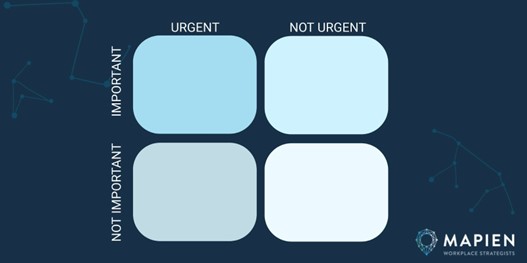
The Time Management Matrix conceptualises your commitments based on two factors: urgency and importance. It consists of four quadrants:
- Quadrant 1: Urgent and important
- Quadrant 2: Not urgent but important
- Quadrant 3: Urgent but not important
- Quadrant 4: Not urgent and not important
So, how do you figure out what activities go into what quadrant? And once you’ve organised them into quadrants… then what?
Let’s take a closer look at each of the quadrants, their purpose, and how to prioritise them.
Breaking Down the Four Quadrants
Quadrant 1: Do First
These are your urgent and important activities. In this quadrant, you might find emerging crises, deadline-driven projects, and genuine emergencies you need to deal with.
Generally speaking, you should address the commitments in this quadrant immediately, otherwise you could face some serious consequences.
Quadrant 2: Schedule
These are your important but non-urgent activities or commitments. Here, you might find relationship building, strategic planning, risk mitigation, systems set up, and health/recreational activities.
Most people tend to delay the commitments in this quadrant because they’re not urgent (yet). The problem with this is that most of your strategic and high-impact tasks usually fall under this category. So, even if you can’t make a start on them, you should immediately add these activities to your work schedule. If you spend most of your time working on these important but non-urgent scheduled tasks, you’ll be more effective and increase your output.
Quadrant 3: Delegate
These are your responsibilities that are urgent and not important. Inside this quadrant, you’ll often see interruptions like emails, phone calls, meetings, notifications, and other people’s issues or requests.
Spending too much time on these tasks will reduce your effectiveness and distract you from your most important goals. Although you can’t necessarily put these tasks off, consider whether you can delegate them to others or break them down into smaller chunks. This will allow you to stay focused on what matters.
Quadrant 4: Limit
Finally, these are your activities that are neither urgent nor important. In this quadrant, you’ll see any trivial or pleasant commitments that are otherwise a waste of time. Examples include social media, workplace drama, busywork, and media consumption. But of course, any activity that feeds your procrastination could fit into this category.
Although it’s good to find a balance and enjoy some downtime, it’s important to limit your time spent here and prioritise your commitments in the other three quadrants. Practice saying no to distractions that eliminate tasks that don’t bring you closer to your goals.
Where did this model come from?
The Time Management Matrix originates from Stephen Covey’s popular book, The 7 Habits of Highly Effective People. It’s covered under habit number three: ‘put first things first’. This habit involves determining which activities are most important and doing them in that order.
In Covey’s words, “The key is not to prioritise what’s on your schedule, but to schedule your priorities.”
We’ve previously shared about another coaching model from Covey’s book. Check out our blog on the Circles of Control, Influence & Concern.

How to Apply the Time Management Matrix
To apply the Time Management Matrix to your own situation, draw and label your quadrant on a piece of paper. Then work through the following four steps, using the visual examples to help guide you.
(1) Identify All Responsibilities
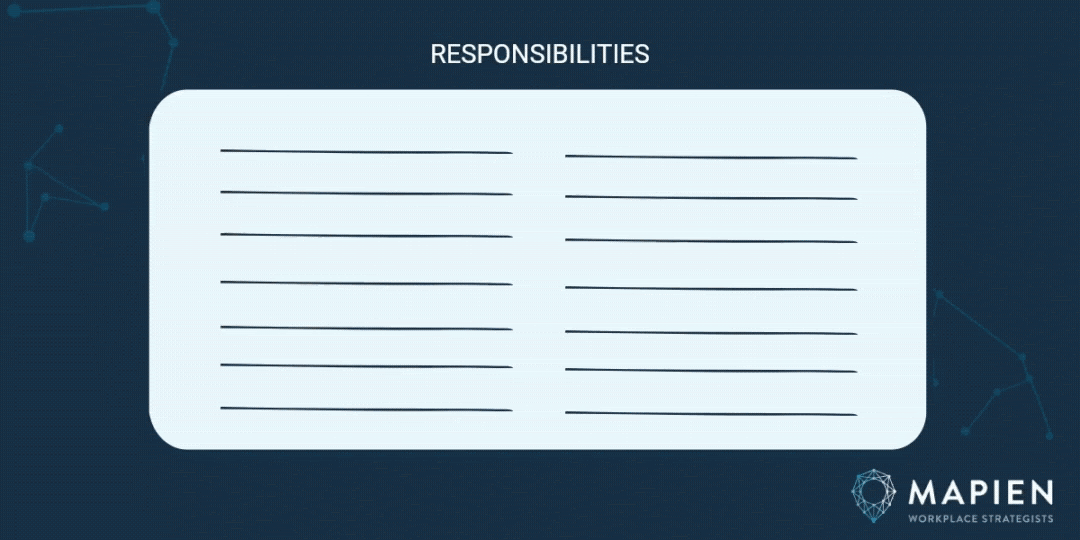
Start by writing out a list of all your existing responsibilities and commitments. If you’re trying to prioritise your work, keep these focused on work-related activities. If you’d like to apply the matrix to another area of your life, you can repeat this process separately.
As a leader, your list of responsibilities and commitments will likely be longer than most. But make sure you get everything down (and out of your head) so that you can see the full picture and evaluate it.
(2) Find Your Current Focus Areas
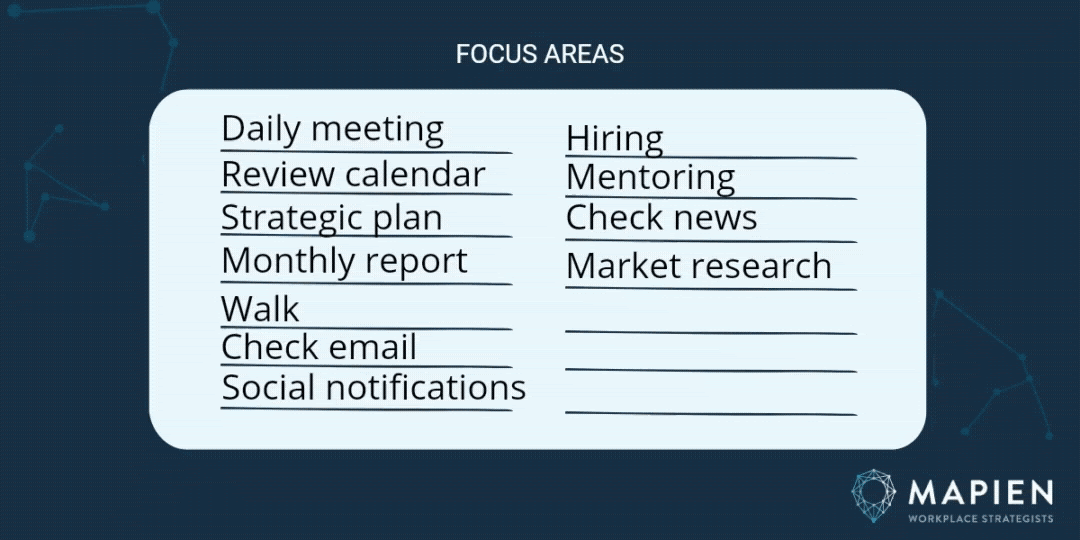
Next, you need to circle the responsibilities and commitments that you’re currently focusing most of your attention on (regardless of their urgency or importance).
(3) Objectively Evaluate Importance and Urgency
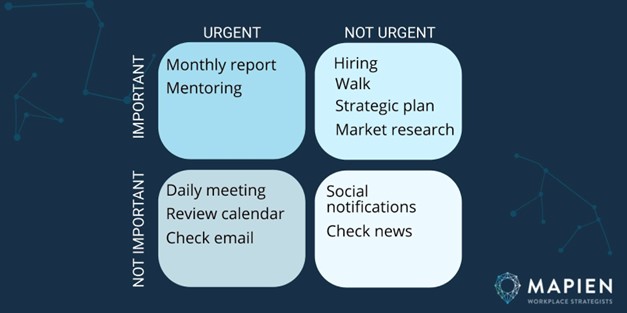
Now it’s time to reflect on your responsibilities and commitments in light of their level of importance and urgency. Consider them objectively — how do they actually impact your goal(s)? What would happen if you delayed the task or simply did not accomplish it?
Based on this reflection, place your tasks into the appropriate quadrant of your matrix.
Tip: Not everything is urgent or important, even if the adrenaline rush is telling you otherwise. That’s why it’s important to objectively evaluate your list, while keeping an eye on your key objectives or most important goals.
(4) Shift Your Attention
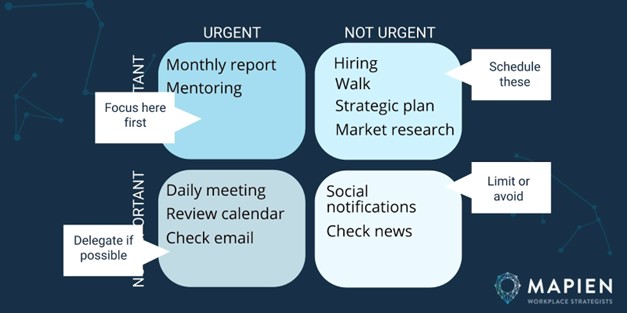
Now for the interesting bit: notice if there are any differences between the activities you’re currently focused on and those that you should be focused on. Then note down any changes you will need to make in order to better focus your attention and energy.
Benefits of the Time Management Matrix
“Not everything is worth equal time and attention.”
The main benefit of using the Time Management Matrix is an ability to prioritise, which will allow you to be more effective.
Other flow-on benefits may include:
- Setting an example – As a leader, you can be a role model to your team and show them how to better prioritise their time.
- Set new habits – Break free from your habit of prioritising based on urgency, and create positive habits that serve you for life.
- Reduce your overwhelm – Shrink your to-do list by honing your list of priorities and figuring out what to delegate, delay, or delete.
- Improved productivity – By focusing on what matters, you’ll arrive at your destination much sooner.
- Better work-life balance – By prioritising your work, you might find more time to enjoy life outside of work (and relax during your downtime).
- Greater satisfaction – Research shows that proactive decision making (made possible through this process) can enhance general self-efficacy and increase satisfaction with both decisions and life.
So, if you’ve been having a tough time deciding which of your (many) responsibilities and commitments require your attention, we’d encourage you to give the Time Management Matrix a go. In fact, you could get your priorities straight in as little as 20 minutes!
Get Support
Looking for leadership coaching or hands-on help with more great tools like this one? Contact us today!
The decision of Panazzolo v Don’s Mechanical and Diesel Service Pty Ltd [2023] FedCFamC2G 665 is an important reminder of an employer’s obligation to properly manage workers who have been injured or are disabled.
The Federal Circuit and Family Court of Australia (‘Court’) recently ruled against a South Australian general automotive repair shop for mishandling an employee’s return to work following an injury sustained outside of work.
In this particular instance, a 58-year-old diesel mechanic injured his wrist during a non-work-related incident while walking his dog. He was advised by his surgeon that he would be unable to engage in heavy lifting or loading involving his injured arm for a period of around 3 months following an operation that took place on 21 October 2020. The injury was to his left arm leaving his right dominant hand uninjured. When he tried to return to work with a medical clearance specifying that he could not engage in heavy lifting for three months but could undertake light duties, his employer insisted on a full clearance for all duties.
The Court found the employer’s actions to be in contravention of the Disability Discrimination Act 1992 (Cth) which requires employers to make “reasonable adjustments” where possible so that a person with a disability is able to perform the inherent requirements of the job. In this case, the employer did not consider whether reasonable adjustments could be made and there was no evidence that any adjustments would have caused unjustifiable hardship on the employer. It is also of note that they ignored the advice of a physiotherapist who made a recommendation that the employee could return to work in a restricted manner. Consequently, the employer was ordered to pay the applicant a sum of $44,000 comprising general damages of $10,000, special damages of $30,000 and interest calculated on both damages payments of $4,000. The Court criticised the employer’s actions as “clumsy” and “ill informed”. It was suggested that the employer might not have been aware of their obligations regarding injuries sustained by employees that occur outside of work hours.
Employer obligations
It’s important to note that while employers are generally not liable for injuries sustained by employees that occur outside of work, where an injury impacts on an employee’s ability to work, then an employer is obligated to make reasonable adjustments where possible in order for the employee to be able to perform the inherent requirements of their job.
To prevent non-compliance with disability discrimination laws, the following should be considered:
1. Make Reasonable Adjustments:
The primary issue for the employer was the failure to consider reasonable adjustments to accommodate the injured employee. Courts emphasise that adjustments should be considered where these are “reasonable” and flexible, including technological or human support solutions.
2. Medical Assessment
A thorough medical assessment is crucial to establish an employee’s capacity to work and determine if reasonable adjustments are possible.
Employers can require employees to undergo an independent medical assessment to assess the extent and impact of the injury.
3. Consider Medical Advice
It’s vital to consider advice from doctors and other qualified health professionals regarding the extent of the disability to determine whether the employer is able to make reasonable adjustments at the workplace to enable the employee to perform the inherent requirements of the job. If so, this can be incorporated into the employee’s return-to-work plan. In this case, the employer disregarded recommendations from a physiotherapist thereby leading to legal consequences.

4. Ignorance of the Law is Not a Defence
The Court’s ruling made it clear that ignorance of disability discrimination laws is not a valid defence.
Employers must familiarise themselves with their legal obligations.
5. Fair Process
To mitigate legal risks, a fair process should be followed when dealing with employees who may not be able to meet their job requirements due to a disability.
This might include a Show Cause process, which gives the employee the opportunity to respond to concerns prior to a decision being made in relation to their employment

Take Home Points
Employers need to give proper consideration of their obligation to make reasonable and temporary adjustments to its workplace, which is a legal obligation under the Disability Discrimination Act 1992. By understanding legal obligations, considering medical advice, and following proper processes, employers can greatly reduce the risk of encountering legal complications.
Connect with us
If you would like to know more about what would be considered a reasonable adjustment to avoid breaching disability discrimination laws, please contact us and a Mapien Workplace Strategist will be in touch within 24 hours.
This is the first blog in our new series on coaching models. Sign up to our mailing list to make sure you don’t miss out on our future content.
As a leader, you likely deal with more stress than the average person. One study suggests that female leaders in executive/middle management positions are more stressed than anyone else in their organisation. It’s also fair to say that the last couple of years have come with a lot of additional stressors — so it’s understandable if you’re feeling more stressed than you used to.
Unfortunately, the health impacts of this stress can be substantial, with adults who have higher than average stress levels reporting more headaches, fatigue, nerves/anxiety, sleep disturbance, and sadness than their peers.
As a leader, managing your stress and optimising your health is critical to allow you to perform at your best and avoid burnout, while ensuring you don’t pass that stress onto your team.
The challenge is that so many sources of stress can often feel out of your control. And that can be quite stressful in itself! So, what can you do?
One model that we’ve found particularly useful for coaching many of the leaders we work with is the Circles of Control, Influence, and Concern.
What is the Circles of Control, Influence & Concern Model?
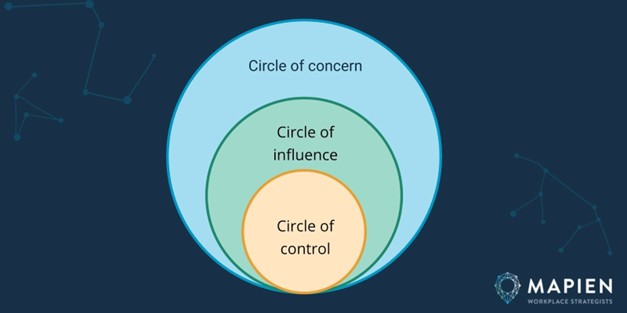
The Circles of Control/Influence/Concern is a coaching model that can help with reflecting on and visualising all the stressors or concerns a person is dealing with.
It consists of three nested circles:
- Circle of Control – Any concerns that you can directly control
- Circle of Influence – Any concerns that you can do something about
- Circle of Concern – All the other things that are causing you concern or stress
It sounds simple (and is!) but reflecting on stressors in this way can be an extremely powerful exercise for someone who feels overwhelmed and under pressure.
An Example of the Circles of Control, Influence & Concern
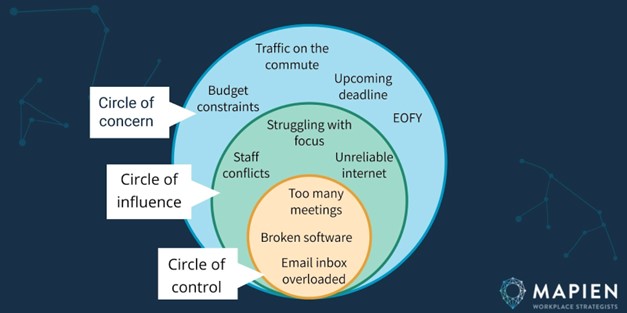
To better understand how this model works, take a look at the above example of one that’s already filled out.
In this situation, there are a number of things that are causing stress or concern. However, the process shows that a lot of these stressors are actually within this person’s sphere of influence or even directly able to be controlled.
By mapping each source of stress to the correct circle the situation can feel a lot less overwhelming. It’s much easier to take practical steps to start minimising overall stress. When you focus on the issues you can directly control or influence, you can start to reduce your stress levels almost right away.
Where Did This Model Originate From?
You might have come across a version of this model before if you’ve read Stephen Covey’s popular book, The 7 Habits of Highly Effective People.
The first habit he discusses in the book is ‘Be Proactive’. In a nutshell, he encourages people to take responsibility for and be proactive about the things they can influence. In other words, don’t put energy towards all the things that you’re concerned about, but instead, focus positive energy on the things you can influence or control.
The idea is that each time you’re successful with solving an issue you can control, you’ll expand your circle of control and influence. And this will allow you to tackle more of those concerns or stressors that were previously out of reach.
How Leaders Can Apply the Circles Coaching Model
Ready to apply the circles model? Work with your leadership coach or guide yourself through the process of reflecting on what your concerns are, what you can influence, and what you can control.
Step 1: Identify Your Stressors
Note down any concerns or stressors that are coming up in a specific context (for instance, at work). Identify which of these concerns matter to you, and which you find mentally or emotionally draining.

Step 2: Note Your Controllable Stressors
Out of the concerns you’ve identified, make note of the ones you can directly control. Usually, this will be anything that relates to your own thoughts, behaviours, and decisions (since you can’t control other people’s thoughts or actions). These will make up the Circle of Control, which is your smallest circle.
Step 3: Note What You Can Influence
Out of your remaining concerns, make note of those that you can exert a level of influence over. In other words, these are the issues that you can do something about, even if you can’t completely control the outcomes. These will make up your Circle of Influence, which is a little larger than (and also wraps around) your Circle of Control.
Step 4: Add the Rest
All the remaining concerns are issues that you can neither control nor influence. Example stressors might include past choices, weather, government policy, the economy, the media, public transport, and traffic. These can go into your Circle of Concern, which is our largest circle and wraps around the other two circles.
Step 5: Take Action
Now that you’ve completed your circles of concern, influence, and control, it’s time to use this tool to determine your next steps. Where should you focus your attention and energy first? Most of the time, it will make sense to start with some issues you can directly control and influence. This will help give you a sense of control and agency, while reducing your stress and achieving greater mental ease.
Bonus: Apply It To Your Team!
Once you’re confident with this model, you could guide your team through this process together, focusing on their concerns related to a specific project.
In a group setting, you might use a whiteboard to draw the three circles. Ask each member to write out any concerns they may have on sticky notes. Next, you could discuss each concern together, determining where it fits, and then placing it into the correct circle. From there, you can encourage team members to take action on any issues they can directly control or influence, working together to gradually reduce the issues or concerns.
Doing this exercise as a team has two major benefits. Firstly, you’ll bring a broader range of concerns and stressors to the surface that may have otherwise gone unnoticed or unacknowledged (but could have impacted the team or project negatively). And secondly, you’ll have a much wider sphere of influence than any one individual, with more people onboard to help tackle the team’s concerns.
Why this Coaching Model Works
This coaching model may be simple, but it can make a real difference for leaders and individuals experiencing stress or overwhelm. It can:
- Guide you to reflect on all the issues that are bothering you and contributing to your stress (consciously or subconsciously)
- Help you take a more proactive approach to managing stress
- Help you develop a more positive mindset by focusing on the things you can control
- Reduce feelings of helplessness or frustration
- Help you prioritise your efforts and energy on which problems you should work on solving first
- Help you build momentum and increase your influence as you go
If you haven’t tried this tool out yet, give it a go and see if it makes a difference to how you tackle stress!
Connect with us
Looking for leadership coaching or hands-on help with more great tools like this one to get the best out of your teams? Contact us today!
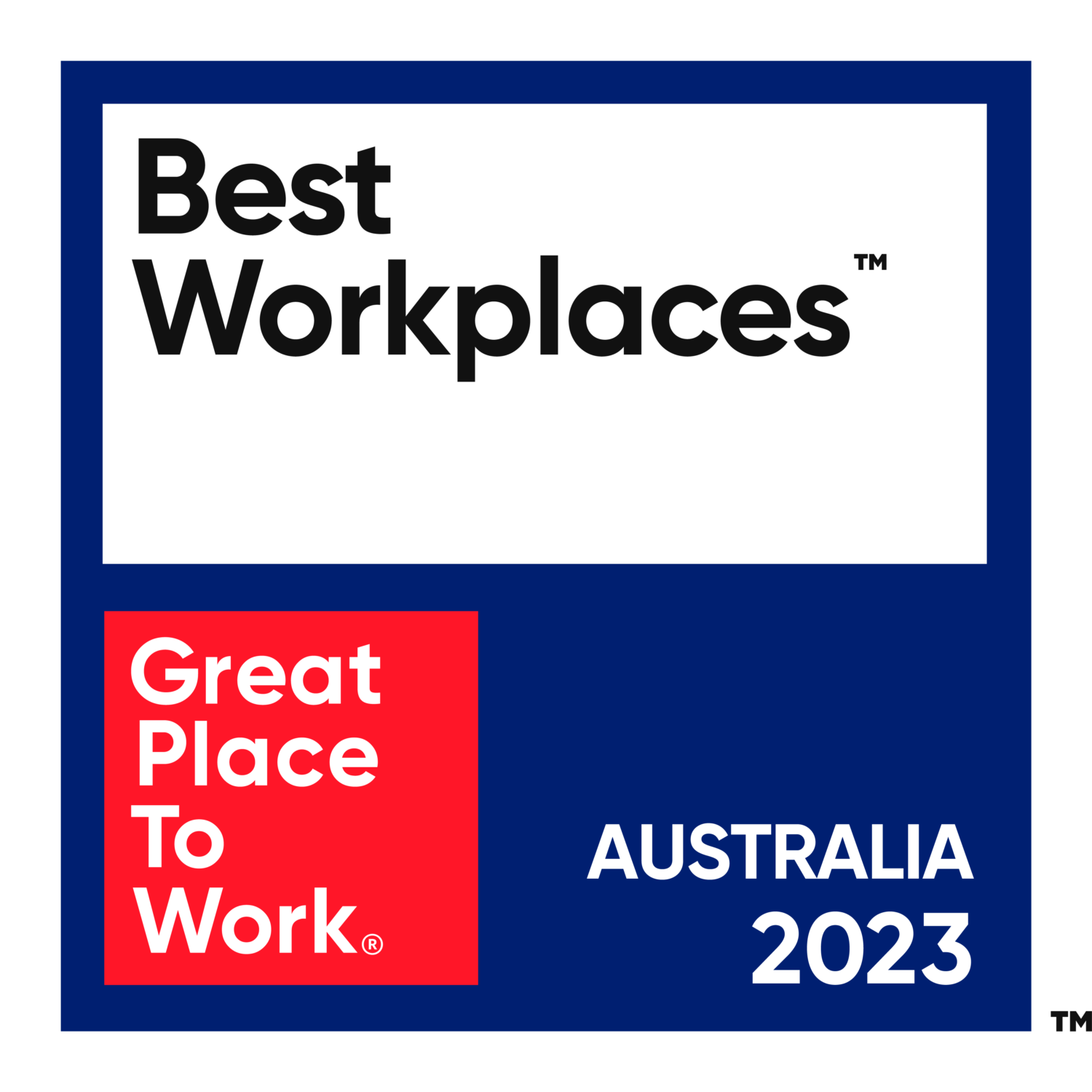
We are excited to announce Mapien has been named on the Best Workplaces™️ in Australia for 2023 List!
This achievement is one we’re incredibly proud of – with each and every team member contributing to the culture and experience we create at Mapien.
Great Place to Work
In 2022 and 2023, Mapien earned earned Great Place To Work® Certification™ after participating in the ‘Great Place to Work’ (GPTW) ‘Trust Index’ Survey.
GPTW is a global authority on workplace culture, and companies all over the world complete the same survey Mapien took part in last year. It is an honour to achieve certification and to earn a place on the list, alongside so many highly regarded organisations.
Awards Dinner
Jamie Paterson and Joseph Pritchard represented Mapien at the Great Place to Work awards dinner last night!
What an absolute honour to come in at number 22 on the Best Workplaces in Australia list. We’re committed to continuing to improve our employee experience and to creating an exceptional workplace.
Australia’s Best Workplaces™ List is determined using The Great Place To Work For All™ methodology to evaluate. The Great Place to Work Trust Index Survey enables employees to share confidential quantitative and qualitative feedback about their organisation’s culture by responding to 60 statements on a 5-point scale and answering two open-ended questions. Collectively, these statements describe a great employee experience, defined by high levels of trust, respect, credibility, fairness, pride, and camaraderie.
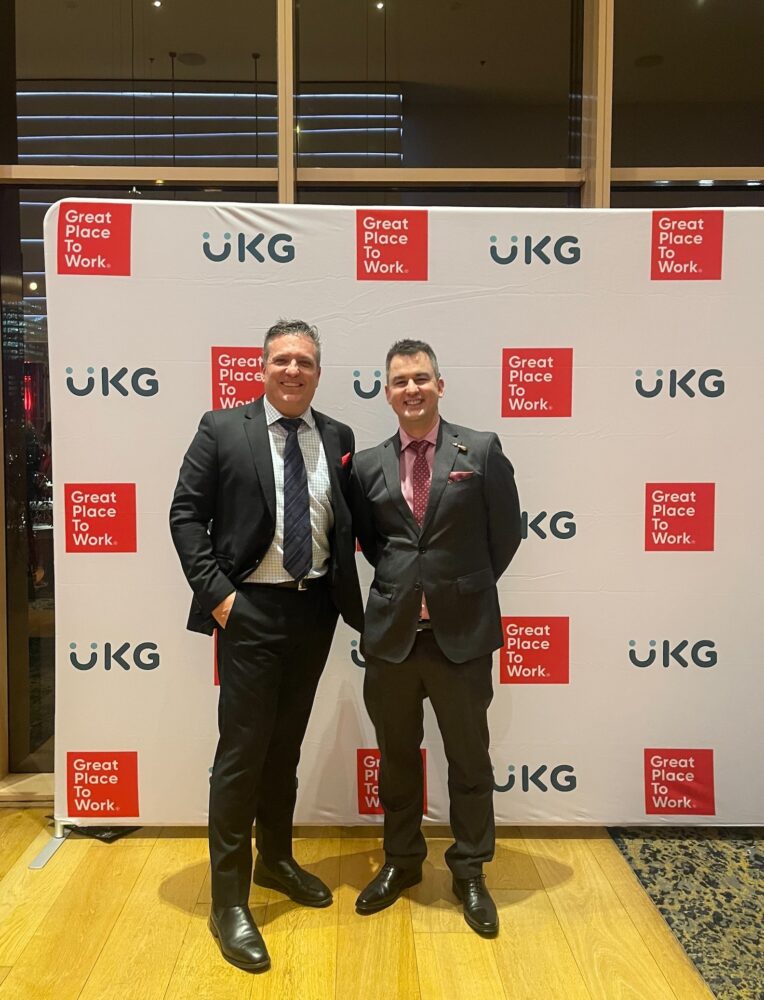
Culture
We know people make the greatest impact on an organisation and at Mapien we strive to provide an exceptional employee experience by fostering a fun, professional and inclusive environment.
100% of employees at Mapien Workplace Strategists say it is a great place to work!
You can find out more about how the employee experience at Mapien and how we rated in comparison to other typical Australian-based companies here.
Connect with us
If you would like to know more about what constitutes an employment relationship, please contact us at hello@mapien.com.au and a Mapien Workplace Strategist will be in touch within 24 hours.
The decision of Mrs Sonia Argentier v City Perfume Retail Pty Ltd [2023] FWC 1819 is an important reminder that a dismissal under the Fair Work Act 2009 (Cth) (‘FW Act’) is determined by whether there has been a termination of an employment relationship and not an employment contract.
The facts
On-Boarding Process
On or about 4 April 2023, the Applicant applied for a position with the Respondent as a Fragrance Brand Ambassador. She attended an on-line interview on 6 April 2023 and later that day received a written communication from the Senior Financial Accountant and HR Manager (‘manager’) advising that she was successful. The written communication referred to onboarding information including instructions for the download of the Respondent’s App called ‘Deputy’ and requested that the documents be completed by 12 April 2023 for a start date of 18 April 2023.
On 6 April 2023, the Applicant received messages from the manager via Deputy stating that she was invited to receive shifts through Deputy and requested that she complete onboarding forms including bank details, tax information and superannuation. Later that day the Applicant accepted the invitation via Deputy, activated her Deputy account and received an employment contract via Deputy. About a week or so later the Applicant attended a brief in-person meeting with the Respondent’s brand partner.
On 11 April 2023, the Respondent sent the Applicant a message via Deputy notifying her about a training session on 19 April 2023. By 12 April 2023, the Applicant had completed the Respondent’s mobile phone policy, uniform policy, new employee form, TFN declaration and super choice form as well as signed and returned her employment contract. On 12 April 2023, the manager sent a message to the Applicant advising that her onboarding was complete and that she would be rostered next week via Deputy. On 13 April 2023, a Director of the Respondent signed the employment contract.
The employment contract stated that the agreement was made on 6 April 2023, an employment relationship had been established, the contract and employment would commence on 18 April 2023 and that the employment would be on a casual basis. The Applicant was rostered to commence her first shift on 20 April 2023 however, this did not eventuate.
Off-Boarding Process
On 17 April 2023, the Applicant asked the manager whether the training session on 19 April 2023 would be paid to which he replied no due to it being professional development. This resulted in the Applicant advising on 18 April 2023 that she would not be attending due to it being unpaid. Later that day the manager advised that she would be given a gift and asked that she confirm her attendance. The Applicant again refused due to it being unpaid.
At 12.52pm on 18 April 2023, the manager sent a message to the Applicant advising that the Brand Ambassador role had been withdrawn and the training session had been cancelled. At 3pm that day the Applicant responded that she had been fired and just wanted to be paid for attending the training. Later that day, the Applicant was advised via Deputy that her rostered shifts for 20, 21 and 22 April 2023 had been removed.
Was there a Dismissal?
The Applicant lodged a general protections application whereby a primary issue for determination was whether the Applicant had been dismissed in accordance with section 386(1) of the FW Act. Essentially, the question was whether the employee’s employment with the employer had been terminated at the employer’s initiative?
Employment Relationship
The Fair Work Commission (‘FWC’) referred to the Full Bench FWC decision of Khayam v Navitas English Pty Ltd [2017] FWCFB 5162 which concluded that a termination of employment at the initiative of the employer for the purpose of section 386(1) of the FW Act is conducted by reference to termination of the employment relationship and not by reference to termination of the employment contract operative immediately before cessation of the employment. Therefore, the question of whether there was a dismissal depends on the status of the employment relationship between the Applicant and the Respondent and not the status of any employment contract.
The FWC determined that despite the absence of work performed and payment of wages there were other factors that indicated the existence of an employment relationship.
Firstly, the employment contract set out the employment conditions and made express reference to an ‘employment relationship’ with the agreement being made on 6 April 2023. Further, by 18 April 2023 those terms including the establishment of an employment relationship had come into effect with no contractual pre-conditions or unresolved issues between the parties that prevented an employment relationship from coming into existence.
Secondly, the Applicant had completed the application and onboarding process as well as being added to the Respondent’s Deputy App. This provided the Applicant with a number of employment-related communications prior to 18 April 2023 including instructions to attend the mandatory training session on 19 April 2023 and shift arrangements. Essentially, by 18 April 2023 the Applicant was part of the Respondent’s workforce. Any service-based payments would have commenced accrual by 18 April 2023.
Thirdly, the employment contract contained a term restricting the employee’s capacity to work for another without the employer’s consent. This restriction came into effect when the employment contract was entered into on 6 April 2023. The FWC also noted that this reflects an employee’s common law duty of fidelity whereby an employee would generally not be allowed to work for another employer while employed by the first employer.
Fourthly, the exchange between the Applicant and the manager prior to commencement of her first shift about attendance at the training session on 19 April 2023 supports the view that there was an employment relationship in existence. This training session was mandatory.
Fifthly, the manager acknowledged in evidence that the Respondent could have allocated shifts on and from 18 April 2023. The FWC noted that had the events on 18 April 2023 not taken place, then the allocated shifts from 20 to 22 April 2023 would have likely been worked by the Applicant.
Based on the above reasoning, the FWC concluded that an employment relationship existed on 18 April 2023 despite the Applicant not yet commencing her first shift.
Termination at the Employer’s Initiative
The FWC was of the view that the Respondent terminated the Applicant’s employment by the message that was sent at 12.52pm on 18 April 2023 and therefore constituted a written notice of termination with immediate effect. The FWC rejected the Respondent’s argument that there was no written evidence that the Applicant had been terminated and the Applicant’s reply message at 3pm that same day constituted a resignation.
Objections Dismissed
The FWC dismissed the Respondent’s objections and concluded that the Applicant had been dismissed within the 21 day application time period. This matter has been relisted for a conciliation conference.
Take home points
This decision highlights that it is the termination of the employment relationship and not the employment contract that is important when determining whether there was a dismissal by an employer. While the wording of the employment contract in this case had some bearing on the outcome, the approach taken by the FWC indicates that the employment relationship may commence prior to the employee commencing their first shift.
Connect with us
If you would like to know more about what constitutes an employment relationship, please contact us at hello@mapien.com.au and a Mapien Workplace Strategist will be in touch within 24 hours.
Mapien are proud supporters of Yalari, an educational and leadership foundation, empowering Indigenous people from regional and remote Australia.
As we continue our commitment to supporting indigenous communities, Yalari stands for everything we value at Mapien. Since 2005, Yalari has been providing Indigenous children from regional and remote communities across Australia with the opportunity to receive a full boarding school scholarship for their secondary education.
It is Yalari’s belief that education is the key to generational change and a brighter future for indigenous children.
Currently Yalari has 249 students on boarding scholarships across Australia and an alumni of 440 studying at universities, working or undertaking further training.
What makes Yalari unique is their boarding school scholarships are complemented by educational, pastoral, personal and cultural support.
Our Mapien team are lucky enough to work alongside many of the independent schools who partner with Yalari and to seeing the positive impact this opportunity has for the students. We’re honoured to support Yalari’s student development program this year and to see the connections and friendships built, and the opportunities provided to the students by Yalari’s passionate team.
A Holistic Approach
Yalari understand it takes a community to educate a child and are committed to their holistic approach to education and development, and to ensuring scholarship recipients grow as happy, healthy and well rounded young people.
Along with Yalari, In the last year, Mapiens have been fortunate enough to support another not-for-profit group – the Indigenous Literacy Foundation (ILF).
In remote communities across Australia access to reading material is often limited, which in turn impacts the achievements of indigenous children. The ILF invests in Aboriginal and Torres Strait Islander remote Communities to provide the tools and resources they need for their children’s literacy future. Understanding early literacy is the foundation of success in education and believing reading opens doors, the ILF work in over 400 remote communities across Australia, instilling a love of reading from a young age.
In 2022 Mapiens jogged, walked and lunged through a 4 Week Team Challenge to raise funds for the ILF, to help open doors to future opportunities and provide access to quality resources, including books in First Languages, to remote communities. Indigenous Literacy Day is coming up soon on 6th September and will celebrate stories, culture and languages.
More education, more opportunity
Further to supporting indigenous education, our team at Mapien have been privileged to meet and attend a Working with Aboriginal People workshop with proud Arrernte-Eastern Arrernte-Kaytetye woman & business leader, Christine Ross to further our own education and understanding.
Christine is an advocate for effecting change and breaking down barriers for our first nation communities and her cultural awareness program is designed to provide a greater understanding of the history of Aboriginal people in Australia, as well as the contemporary issues faced today.
The heartfelt session helps improve understanding and communication with Aboriginal employees through an increased understanding of issues Aboriginal people face that may impact on their employment.
We have been privileged to partner with Christine on several client projects as well as attending & proudly sponsoring her much loved International Women’s Day events, celebrating Aboriginal and Torres Strait Islander women’s voices.

Connection
Mapien are dedicated to continuing to support our indigenous communities and to our ongoing growth and education.
A learning culture in the workplace refers to the environment, practices, and values within an organisation that support the continuous learning, growth, and development of its employees. It is a mindset that encourages individuals and teams to acquire new skills, knowledge, and competencies to adapt to changing business landscapes and improve overall performance.
Learning culture in our workplace
An organisation is made up of people bringing individual skillsets to the table. A culture of learning builds an environment where sharing expertise is routine, with teams embracing a growth mindset, benefiting from each other internally, and also through external resources, like training courses and webinars.
Where learning at work is not just limited to role relevant training but also broader training, leadership skills etc, the organisation is aiming to provide a supportive workplace enabling employees to achieve their goals and in turn benefitting the business as a whole.
What defines a good learning culture?
When employees feel motivated for continuous development and actively participate in the opportunities provided by the organisation, it ensures high engagement and a learning mindset, where they are open to new concepts and experiences. This in turn feeds into their performance, knowledge sharing and innovative ideas.
Can the success of learning be measured?
Can you assess and quantify whether your business is achieving a learning culture? It is essential to remember learning is an ongoing process, and a workplace that prioritises continuous learning will see benefits in a number of aspects including recruiting talent, overall productivity, and employee satisfaction.
A good quantifiable way to assess learning success is to invest in a LMS (Learning Management System) which provides a platform for structured training programs, and data to assess usage and course progression.
If investing in a LMS is not an option for a business, it is practical to instead use surveys, encouraging an open-door policy to understand what is beneficial and what can be improved directly from employees.
Most importantly, a good workplace learning culture should be sustainable, and this happens when businesses plan, test and learn to enable employees to achieve their goals and bring ideas to fruition.

Is it essential to create a learning culture?
For employees to bring something new to the table, it is essential to think outside the box, which can be encouraged by learning culture. In order to keep up with our competitors in this fast-paced business landscape, there is a constant need to innovate and improve products and services. A number of sectors including technology, health, banking, education, have been required to fast-track themselves in the post-covid era.
Key aspects and benefits of fostering a learning environment
It takes time to build a learning culture and an achievable goal for every organisation willing to invest their energy and resources, and to reap benefits. We have a few pointers below:
Attracting and retaining talent:
This is a key benefit for business to offer not just to existing employees but also this is a great selling point for potential new talent. Employees don’t just consider their current role but also are invested in their career and understand they need to be ready to adapt as the world continues to change. Learning culture encourages continuous development.
An innovative and growth mind-set:
As mentioned above, a workplace that values learning and shared knowledge is also innovative. Businesses must be ready to adapt to change. Whether it’s a global pandemic, a tight talent pool or an economic downturn, circumstances outside our control can rapidly affect how a company operates. You cannot ignore the speed of the digital revolution in the last 3 years.
When an organisation builds a learning culture and provides access to knowledge, teams are open to new learning and challenges and provide valuable contributions to sustain a business.
Employee engagement:
Improved employee engagement can build productivity, help you retain staff and reduce turnover.
Businesses should enable personal and professional development to not only improve their output, but to build happier, more well-rounded teams where everyone feels valued because the company is investing time and money building employee’s skills, sharing knowledge, and recognising career pathways. When employees feel valued and challenged by their work, learning programs can be a fantastic way to improve the employee engagement.
Creating a learning culture
But how do we create and practice a good learning culture?
(1) Make learning accessible
Organisations can offer employees the resources or support for their own development where they can choose courses or learning programs of interest, or which they feel will most benefit their progression.
Learning Management Systems are also great platforms that offer resources that employees can access.
(2) Plan and structure learning/training programs
Organisations can identify the skills employees want to learn and build learning pathways for them, or they can rely on external organisations to take teams through training or team specific skills. They can also develop personalised learning plans which factor in how businesses will support employee goals like a practical skills or academic qualifications.
As everybody learns differently, offering multiple ways for the information in a training session to be conveyed or recorded are recommended, such as through video and audio as well as written presentations and practical assignments.
(3) Hard and soft Skills
Practical skills which can be quantified, like accounting, coding, and languages are important, and contribute to the hard skills or technical skills.
Businesses should also factor in soft-skills as part of their training programs. Soft skills that are based on internal attributes such as leadership, resilience and interpersonal skills are also essential in the future of work.
(4) Rewarding learning
Supporting and rewarding employees for taking time out to learn, encourages them to designate time to training and development. As finding spare time in a busy work week can be a challenge, employers may also encourage employees to focus on development by giving them time to leave work for study.
Rewarding is not just about praising and promoting those who display an effort to learn and develop; it’s also about creating a climate that nurtures critical thinking, where challenging authority and speaking up are encouraged. This is particularly important if you want your team to produce something innovative.
When an employer invests in employees’ development, it creates a collaborative workplace culture that values innovation and progression. A learning culture should be a long-term priority for business. How is your organisation nurturing its learning culture?
From our own perspective, Mapien as a training provider offers targeted training courses on areas like leadership skills and abilities, performing with resilience and grit, unconscious bias, and many more, in addition to our public training offerings for leadership. Further than that though, we also direct our attention inwards, providing training by our own internal experts to where it is most needed within our own business, bringing in experts in specific areas of growth and potential for our teams, and providing avenues for individual personal growth and learning opportunities. These development and learning goals are identified through dedicated progress conversations as a part of our review and development process, and form a point of pride for our business.
By nurturing a learning culture, organisations can create an environment where employees thrive, innovation flourishes, and the organisation as a whole can adapt and succeed in an ever-changing world.

Connect with us
If you would like to discuss learning cultures further, how to boost your organisations learning culture, or to discuss the Mapien offering of training and development services, you can reach out to us at hello@mapien.com.au.
Keeping your workplace psychologically safe
According to Work Safe Australia statistics, psychological health accounts for 9.3% of all serious workplace injury and disease claims.
While psychosocial health has always been considered under the Workplace Health and Safety Act, it has recently been incorporated into the state-based Workplace Health and Safety Regulations, meaning employers are now obligated to consider the assessment and management of those factors that may impact psychosocial health.
Psychosocial hazards can be a worrisome & overwhelmingly grey area. With one in five Australians reporting having experienced a mental health issue in the last year, and two in five leaving a job due to a poor mental health environment in the workplace, it is more important than ever to interpret the grey and create a workplace that allows your people to feel safe and supported.
When employees feel psychologically safe, they are typically more motivated, open minded and comfortable to speak up, share their thoughts and ideas, and take risks.
So, what should you be looking out for?
Psychosocial hazards can cause both psychological harm (such as anxiety, depression, post-traumatic stress disorder (PTSD) and sleep disorders) and physical harm, like musculoskeletal injury, chronic disease, and physical injury following fatigue-related workplace incidents.
There are 14 common psychosocial hazards identified in the Safe Work Codes of Practice, which employers should be looking out for in the workplace.

How can you manage the risks?
Now we know the common hazards which can affect an employee’s psychological health and safety, it’s important to assess and implement risk control strategies to protect your workers, decrease disruption caused by staff turnover and absenteeism, and improve productivity and broader organisational performance.
Mapien’s philosophy for assessing psychosocial risks is based on the process outlined in the Safe Work Australia code of practice and is made up of four stages.
- Identify hazards
Understanding the work environment to find out what could potentially cause harm. - Assess risks
Understanding the nature of the harm the hazard could cause, how serious the harm could be, and the likelihood of it happening. - Control
Implementing effective control measures and solutions for sustainable outcomes. This means either eliminating the risk all together (if reasonably practicable), or implementing control measures to minimise the risks, as well as ensuring those control measures remain effective over time. - Review
This is not a set and forget process. It is important to continually review control measures to ensure they are working as planned, and make changes as required to allow for a long term psychologically safe workplace.
It important to consider leadership and management commitment and to consult with workers across all levels of the business when it comes to the process of managing psychosocial hazards.
Creating a psychologically safe workplace
Our Mapien team integrate their multidisciplinary knowledge, to help you create a safe workplace for everyone. We partner with you to identify, design & implement tailored risk control strategies which create lasting organisational benefits, including improved workplace culture, identifying and minimising risks to prevent stress and burnout, improved workplace safety and reduced injuries and workers compensation claims.
A psychologically safe workplace results in happier, engaged employees and ultimately, boosts team performance.

More information
Click here for Safe Work Australia Code of Practice

